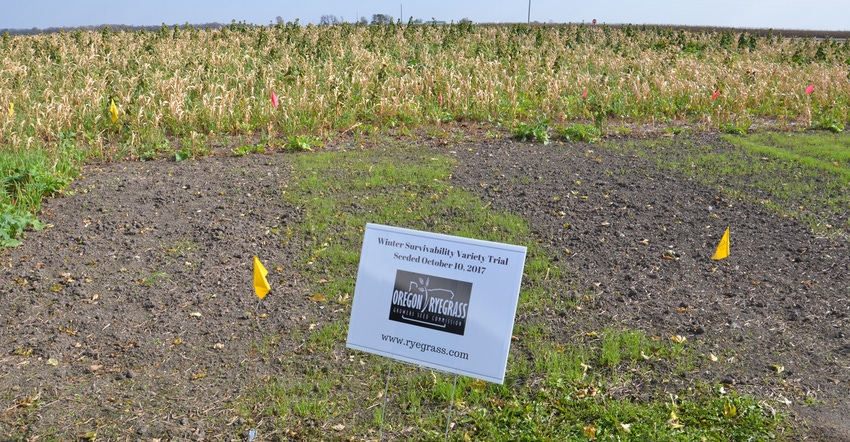March 16, 2022

Annual ryegrass has been used for many years as a cover crop in Indiana. Yet many farmers are hesitant to include it in their toolbox. Some hesitancy is based on potential issues with termination of annual ryegrass. Another concern is the potential for annual ryegrass to escape and become a weed. Some basic information on annual ryegrass can help alleviate those concerns and improve your comfort level.
Know the differences between annual ryegrass and cereal rye. Annual ryegrass is an annual forage grass with the ability to put down deep roots over winter. Cereal rye is a cereal grain with totally different characteristics. Don’t call either one “annual rye” since that can lead to confusion over which species you are talking about.
The roots that allow annual ryegrass to break up soil compaction are the very reason it can be a challenge to terminate. Get comfortable with using cover crops before using annual ryegrass on a large scale.
The late Mike Plumer, longtime researcher with University of Illinois Extension, probably completed more research and on-farm trials with annual ryegrass than anyone else. He was a major contributor, along with others, to “Annual Ryegrass as a Cover Crop.” The publication provides the backbone of the following considerations when it comes to incorporating this species into your cover crop plan.
If you plan to use annual ryegrass, the termination plan begins with seed selection. Variety matters and must be considered. Be very cautious about using seed that is “variety not stated.” You desire a variety that will not winter-kill in your area but will mature equitably in the spring to ensure an effective termination.
Italian ryegrass isn’t annual ryegrass. It is a biennial ryegrass and should not be used as a cover crop.
When you spray matters
When making termination plans, timing is key. In spring, the cover crop needs to come out of dormancy and be actively growing. If you have not mowed your lawn twice, it’s too early to terminate annual ryegrass. Generally, at least three consecutive days of temperatures of 50 degrees F or higher, with no nights below 35 degrees, are warm enough to achieve this. Do not try to terminate on the first warm, sunny day.
Time of day also matters. Since translocation to roots is shut down at night, and it takes herbicide three hours to translocate to roots, herbicide application needs to take place between 10 a.m. and 2 p.m.
Another key is water in your sprayer. Two important chemical properties are acidity and hardness. Both can impact the effectiveness of many herbicides. You will probably need to add an acid product to reduce the pH, along with checking on hardness or calcium level. Contact your local ag retailer for products to treat your spray water if you do your own spraying.
It is vital that you complete adding amendments and do proper agitation prior to adding herbicides. Always check labels to make sure that mixing multiple herbicides will not produce an antagonistic effect.
Pay attention to termination details! Annual ryegrass can be a valuable tool when correctly used as a cover crop. If you feel that annual ryegrass fits your operation, contact your local Natural Resources Conservation Service or soil and water conservation district for more information.
Donovan is a district conservationist with the Natural Resources Conservation Service.
About the Author(s)
You May Also Like






